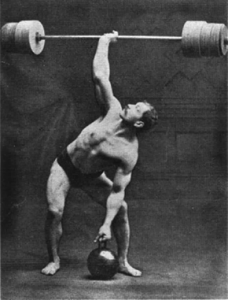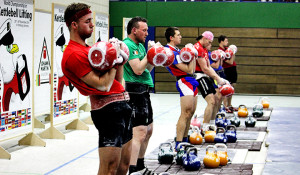Nobody bothered to ask me, but if they did ask me, here’s what I would tell them: Get in really good shape if you want to compete. A jiujitsu competition is not just about who has the best jiujitsu skills, it’s about who is willing to work harder to win. The worst way to lose in my opinion is to gas out because you were not in fighting shape. There are lots of ways to train but if I was going to initially assess your readiness, I would look at these four workouts first and see how your performed. These are just three workouts that I have frequently used to train and assess athletes and there are many more that I could choose. Let’s start here. These workouts are relatively low skill and low weight but pack a punch and are useful to gauge how ready you are for the physical and mental challenges of competition. First learn to beat a barbell that isn’t fighting back before going against a live opponent.
When you enter a tournament you know based on your belt level how long your matches will last. A white belt match is 5 minutes and a black belt match is 10 minutes (different organizations will have different time limits). You will know your weight and your opponents should be within a certain weight range. You probably will not know how many matches you will have until the day of because brackets are often not set until they have all the participants registered and checked in. Ask around and get a sense if you are in a stacked division or a light division. Obviously it is better to be over-prepared for more matches. On average most people have about 4 matches at local tournaments. Be prepared. Also in terms of strength you should be able to back squat and deadlift a barbell that weighs the same or more than you for multiple reps. You should have multiple pull-ups and dips.
“Fight Gone Bad”
In the early days of CrossFit, Coach Glassman created a workout for BJ Penn to prepare him for the UFC. The workout was called “Fight Gone Bad” and it was as follows:
3 5-minute rounds of: (5 rounds if he was preparing for a championship fight).
- 1 minute of Wallballs, 20lbs 10ft target
- 1 minute of Sumo Deadlift High Pulls, 75 lbs
- 1 minute of Box Jumps, 20”
- 1 minute of Push Press, 75lbs
- 1 minute of Rowing for Calories
- 1 minute rest between rounds.
The score was the total number of reps (and calories on the rower) added up over all three rounds. What is great about this workout is that by doing the movements correctly you are forced to do a minimum amount of work for each rep and the more reps you get overall indicates your ability put out power for the duration of a fight.
“The Death Race”
5 rounds for time of:
- 15 Calories Bike
- 10 Burpees
This is a “gas pedal” workout: you step on the gas and go! There is no rest. You have to hit this hard and fast. Getting this workout done in under 7 minutes will require you to go to a dark place. If you want to be physically and mentally prepared for a competition, strive to do this workout as fast as possible.
“StrongFit Conditioning Benchmark”
Originally this workout was written as 8 minutes with a 140lb sandbag. I suggest you set the clock to match your rank level: 5 minutes for white, 6 for blue, etc. The weight should be 60-70% of your body weight. So a 200lb black belt should be carrying a 120-140lb sandbag for 10 minutes. This is just a simple and painful workout that will test your fortitude.
Pick up the bag and bear hug it or Zercher it and do 5, below-parallel squats, walk 50ft and turn around and do 5 more squats and walk back. Repeat this as many times as you can during the time. The less you drop the bag the better. The more rounds you do the better. An average of a round per minute is pretty good. You want to exceed that by as much as possible. Hugging a heavy sandbag is a good facsimile for grappling with another human of similar size.
CrossFit Open Workout 12.1
This is by far the simplest workout you can do to determine your readiness. The original workout is simple: perform as many burpees as you can in 7 minutes. In its original form the burpees were done to a target six inches above the athlete’s max reach. This dramatically impacts your score. I suggest you modify this to a time that corresponds to your belt level: 5 minutes for white belt, 6 for blue, etc. I also recommend you try it with and without the target. An average of about 12 burpees per minute with a target (and 15 without a target) is excellent. If you can move at that pace it will be hard for someone to out work your during your match.
There are lots of ways to train and there is no guaranty that being stronger or faster or doing more burpees will get you a medal. But being in good shape gives you confidence it gives you a leg up on your opponent. It’s one less thing you have to worry about when you’re on the mat. Go work fucking harder.


